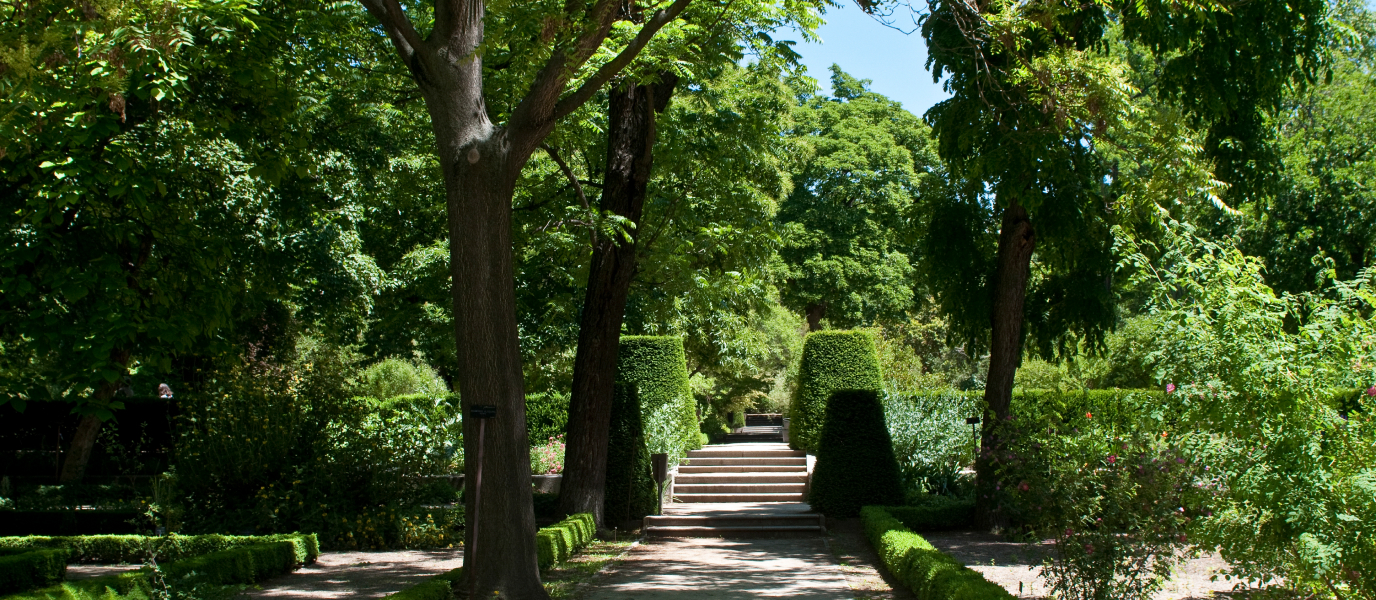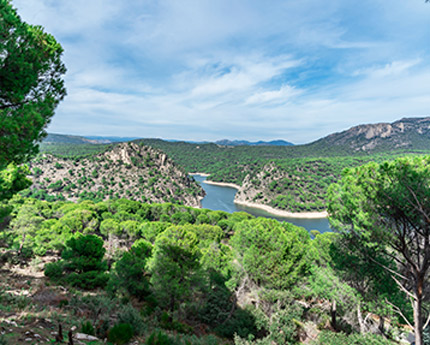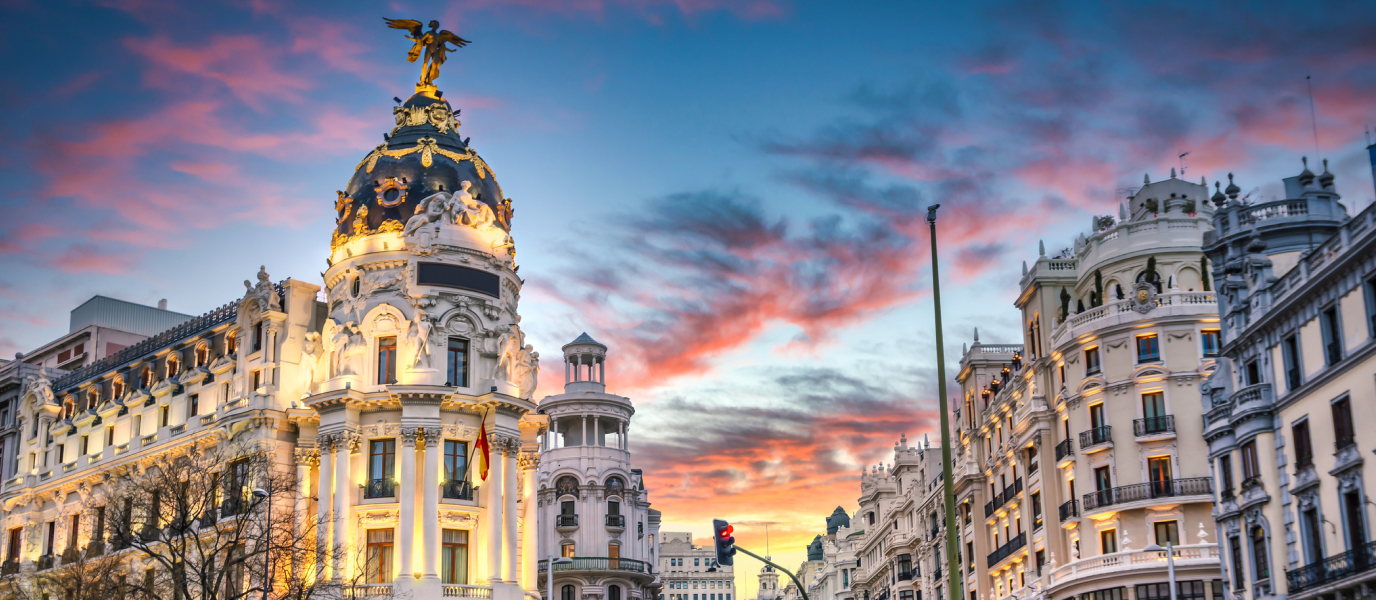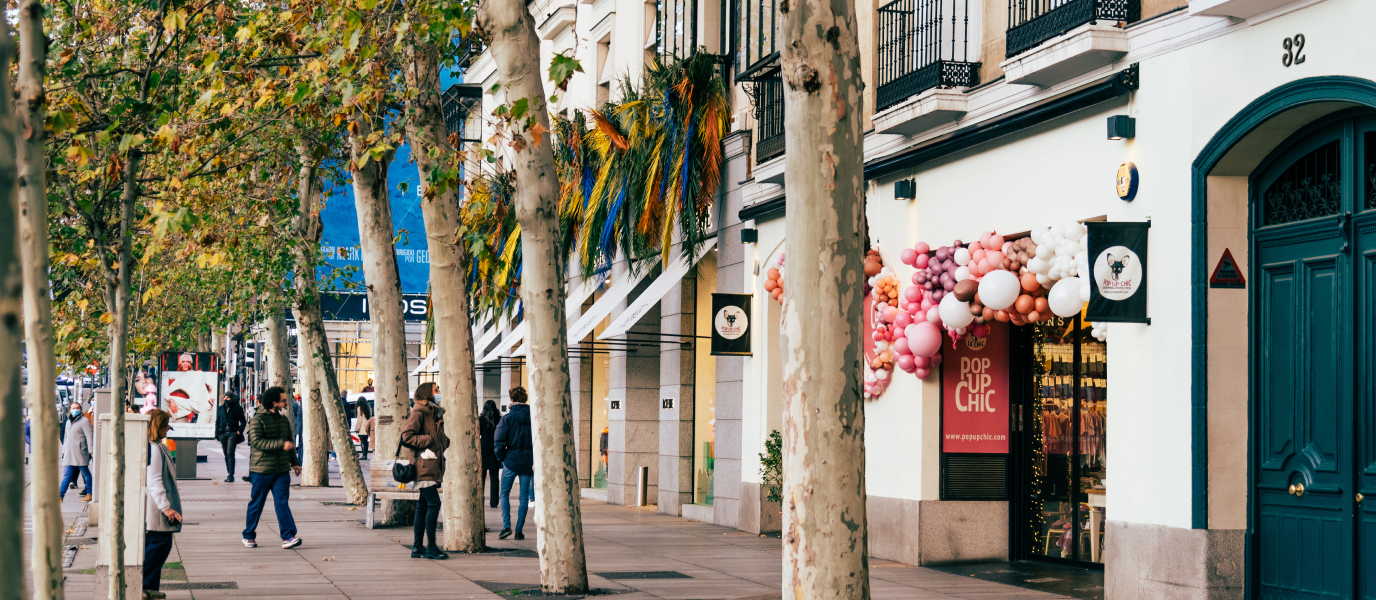Madrid’s Royal Botanical Garden, the story of which started way back in 1755, is extremely well-located. It sits between the Prado Museum and the 100-year-old Cuesta de Moyano. Along with the Parque del Retiro, this is one of the capital’s green lungs. Since 1939, it has been managed by the Consejo Superior de Investigaciones Científicas [CSIC – Spanish National Research Council] and is home to more than 30,000 species of exotic plants and trees from all over the world.
Accessing the Botanical Garden through the Plaza de Murillo
Start your stroll by entering the garden through the Puerta de Villanueva gate, built in 1789, which opens out onto the Plaza de Murillo, right in front of the Prado. Grab an informational leaflet for a map of the garden to help you get your bearings. Head straight ahead to the so-called Terraza de los Cuadros, one of the three terraces or levels into which the Botanical Garden is divided. It’s located next to the fence that separates it from the Paseo del Prado, where you’ll find the Puerta Real de Sabatini gate, which only opens occasionally. The design of the Terraza de los Cuadros is chequered, dotted with fountains and statues. Here you’ll find one of Madrid’s three iconic rose gardens, the others being located in the Parque del Retiro and the Parque del Oeste. You’ll also come across a bronze plaque dedicated to Doña Blanca Urquijo Eulate, who started the Botanical Garden’s collection of roses.

Continue your walk along the Paseo de las Estatuas, so called thanks to the effigies of four exceptional botanists that stand here. They were erected in 1866 and are of José Cavanilles y Palop, director of the garden between 1801 and 1814; Mariano Lagasca, one of the driving forces behind the recovery of the Botanical Garden during an age of apathy, Simón de Rojas, director in 1825, and José Quer y Martínez, a supporter of Madrid’s first Botanical Garden.
Every plant more exotic than the last
Moving onto the Terraza de las Escuelas, which is dotted with circular granite fountains. This is an area of monumental trees and plants that are each more exotic than the last; each identified by an informative plaque. It goes without saying that depending on the time of year you visit the Botanical Garden, the number of flowers in bloom will vary. But what always remains the same is the bronze statue of King Charles III, which you’ll come across before moving to the Terraza Plano de la Flor. This is the newest area, added to the rest of the garden in 1858. It’s arranged as a romantic garden, covered in hedges, enchanting corners and meandering paths. Here you’ll find the Pabellón de Villanueva, standing behind a circular lawn, in the centre of which lies a pool, with a bronze bust of Linneaus.
Head on to the Botanical Garden’s three greenhouses. They’re located on the north side and one of them, known as the Estufa de Graells, is home to tropical plants. Another houses temporary exhibitions, and the third plants from South America, Asia and Africa.
The stars of the Botanical Garden
Some of the most famous specimens in the Botanical Garden include a 200-year-old oak known as ‘El Abuelo’ [The Grandfather], and a sequoia dating from the same time period. A cypress known as ‘Bicentenario’ is also notable, thought to be the oldest tree in the garden. It is 240 years old and 32 metres tall. Since 1996, another star of the show has been the large collection of bonsais that was donated by the former president, Felipe González.
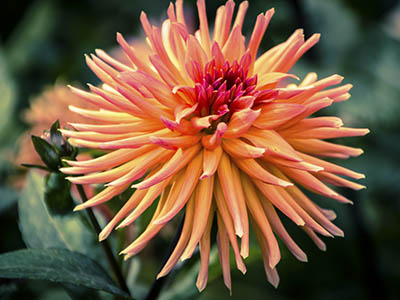
Let us guide you through the long history of the Botanical Garden. It was King Ferdinand VI who ordered the garden’s creation in 1755. The original site wasn’t here, but by the River Manzanares, in the area of what is now Puerta de Hierro, on the Migas Calientes site, out towards El Pardo. However, a short time later, in 1781, Charles III decided to move that Botanical Garden to its current location. The project was headed by none other than Francisco Sabatini and Juan de Villanueva. With the aim of creating a large collection of exotic plants, expeditions were sent out to different corners of the planet. One of the best known was the Malaspina Expedition, but others headed for the Orinoco, Peru, Chile, New Granada and New Spain.
Key moments in the history of the Royal Botanical Garden
Would you like to find out about some of the key moments in the history of the Botanical Garden? For example, in 1808, as a result of the War of Independence, the garden was practically destroyed. It wasn’t until 1857 that important reforms were begun. It was around then that a zoo was installed in the Botanical Garden that would later be moved to the neighbouring Parque del Retiro. In 1882, the Royal Garden ceded part of its land for the construction of the Ministry of Public Works and Transport, today the Ministry of Agriculture and Fisheries. The surface area of the gardens was reduced to the eight hectares that you can visit today. Since 1942, it has also been considered a National Artistic Garden.




































































